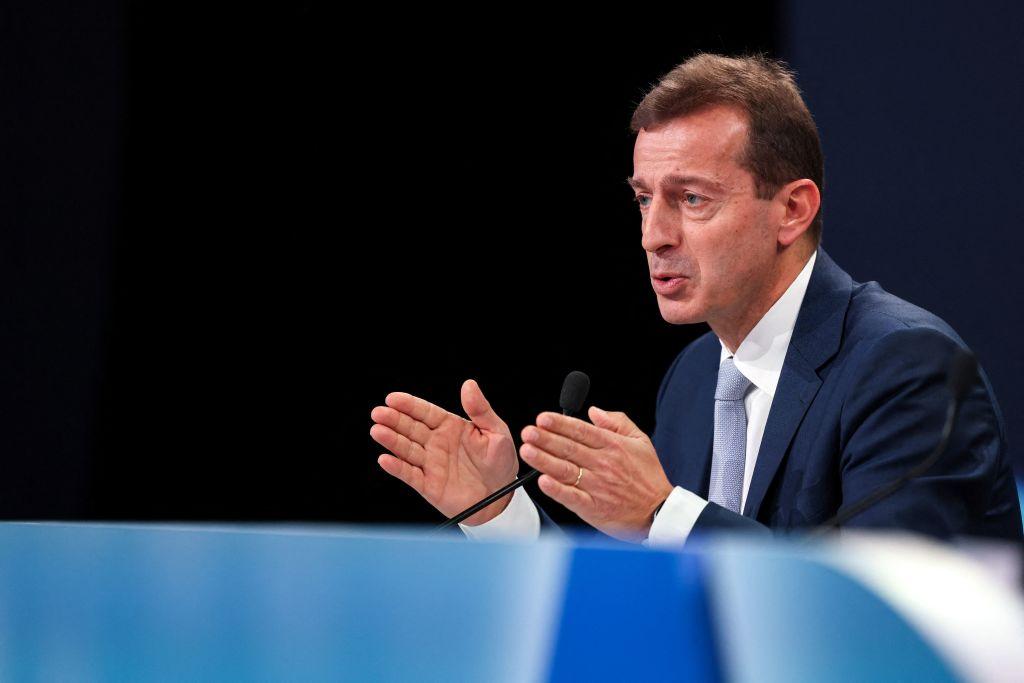
TOULOUSE—With demand for widebodies returning forcefully, Airbus has decided to substantially increase production of the A330neo and A350, while working on the potential launch of an A330neo-based freighter.
At the same time, narrowbody output targets have been revised downward as the supply chain continues to struggle.
According to Airbus CEO Guillaume Faury, the OEM will increase output of the A330neo from three aircraft per month to four by 2024 and boost A350 production by 50% from the current six per month to nine at the end of 2025. Faury said Feb. 16 that Airbus is not facing the same supplier constraints on the widebody side that it is dealing with on A320neo family and A220 production.
There have, however, been strong concerns about the financial situation of engine-maker Rolls-Royce that builds the Trent family of engines that equip both the A330neo and A350. Rolls’ new CEO Tufan Erginbilgic recently described the company as a “burning platform,” the performance of which was “unsustainable.” Faury made clear that “we need all partners on board. Rolls-Royce is very close to us. We count on them to come with us and that is what they have committed to.”
The A350, in particular, has seen a recent surge in orders as Qatar Airways’ commitment for an additional 23 aircraft has been reinstated and Air India signed up for 40 units, with the first of these starting to be delivered at the end of this year. By the middle of 2024, Emirates will start taking the first of 50 A350-900s on firm order and has been pushing for a stream of two aircraft per month from Airbus. Some airlines are also pondering follow-on A350 orders as the European Union Aviation Safety Agency’s (EASA) certification conditions of the Boeing 777X and timing of its entry into service remain unclear.
Airbus currently has a backlog of 368 undelivered A350s, not counting 63 additional aircraft for Air India and Qatar Airways. The A330neo backlog is smaller at 195 aircraft, but Faury made clear that he believes in a strong future for that aircraft. Faury hinted that Airbus is nearing a decision to launch a freighter version of the A330neo, now that it has started development of the A350F. “We have to choose our battles,” he said. A launch of an “A321neoF” was “not very likely” for the time being. “You can draw your own conclusion about the third [A330neo] platform,” he said.
While Airbus is confident it can deliver on the new widebody production targets, management has finally accepted that its narrowbody ambitions have been unrealistic. Faury pushed out the target of rate 75 for the A320neo family from 2025 to 2026. Airbus plans to produce 65 of the aircraft by the end of 2024 and Faury predicted an average rate of around 50 aircraft per month for 2023. The guidance for the A220 remains unchanged at 14 aircraft per month “by the middle of the decade,” which leaves more room for interpretation than a defined year.
“2022 was a complex year,” Faury said, and “complexity and volatility are persisting. Disruption is still possible.” The company was “laser-focused on ramping up production,” with customers such as most recently U.S. ULCCs Spirit Airlines and Frontier Airlines complaining publicly about Airbus delays materially affecting 2023 capacity. “It will take us two years to achieve what we had planned to do in one year,” Faury conceded. That the supply chain could not cope with the planned growth was “obviously frustrating.”
Airbus had delivered 661 commercial aircraft in 2022, compared to an earlier target of 720—that number is now the new goal for 2023. The A321XLR is still scheduled to enter service in the second quarter of 2024. Production slots for the A320neo family are only available in 2029 and airlines are beginning to place orders for the 2030s, Faury said. Volumes in 2023 will be mainly driven by increased output of the A320neo family and the A220.
On the A220 program, Airbus is seeing “strong appetite in the market” for a stretched A220-500. Airbus is “looking at different options and architectures” but has “not yet decided to move forward,” Faury said. The company wants to be “successful with the ramp-up first.”
In 2022, Airbus’ overall revenues increased 13% to €58.8 billion ($63 billion). Airbus Commercial contributed €41 billion, up 15% as deliveries grew compared to the previous year. The commercial aircraft unit made a €4.8 billion operating profit, an improvement of 15%. “We were able to meet our financial targets, but we were confronted with strong headwinds in the supply chain,” departing Airbus CFO Dominik Asam said. Overall free cashflow improved from €3.5 billion to €4.7 billion.
